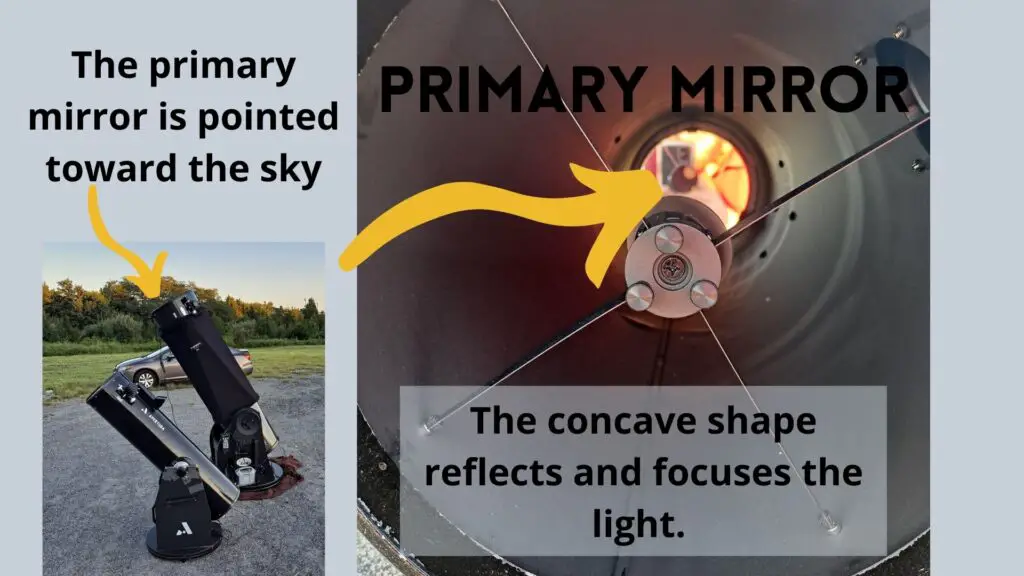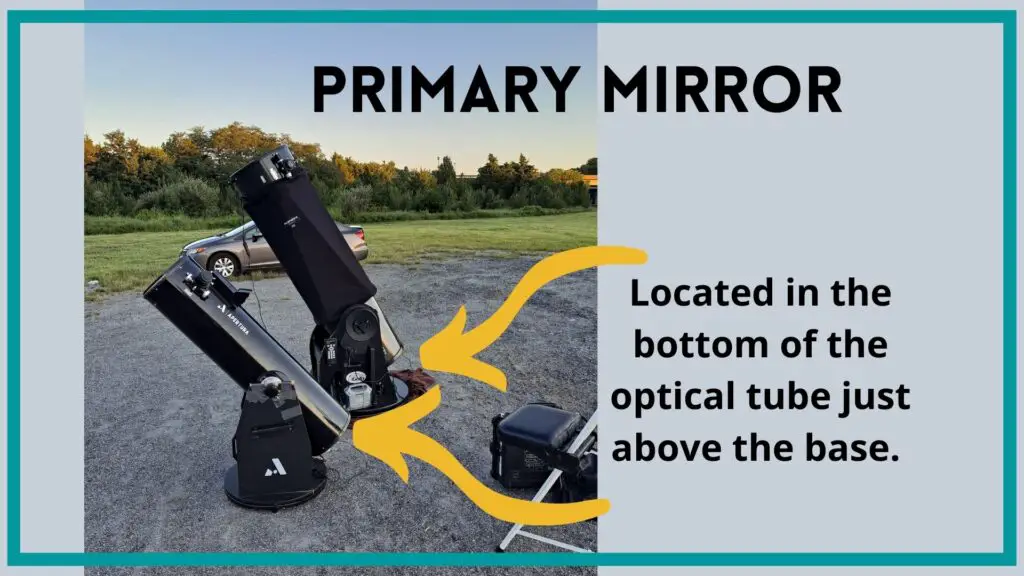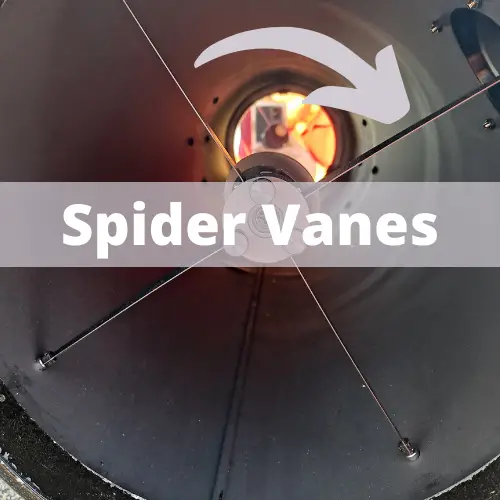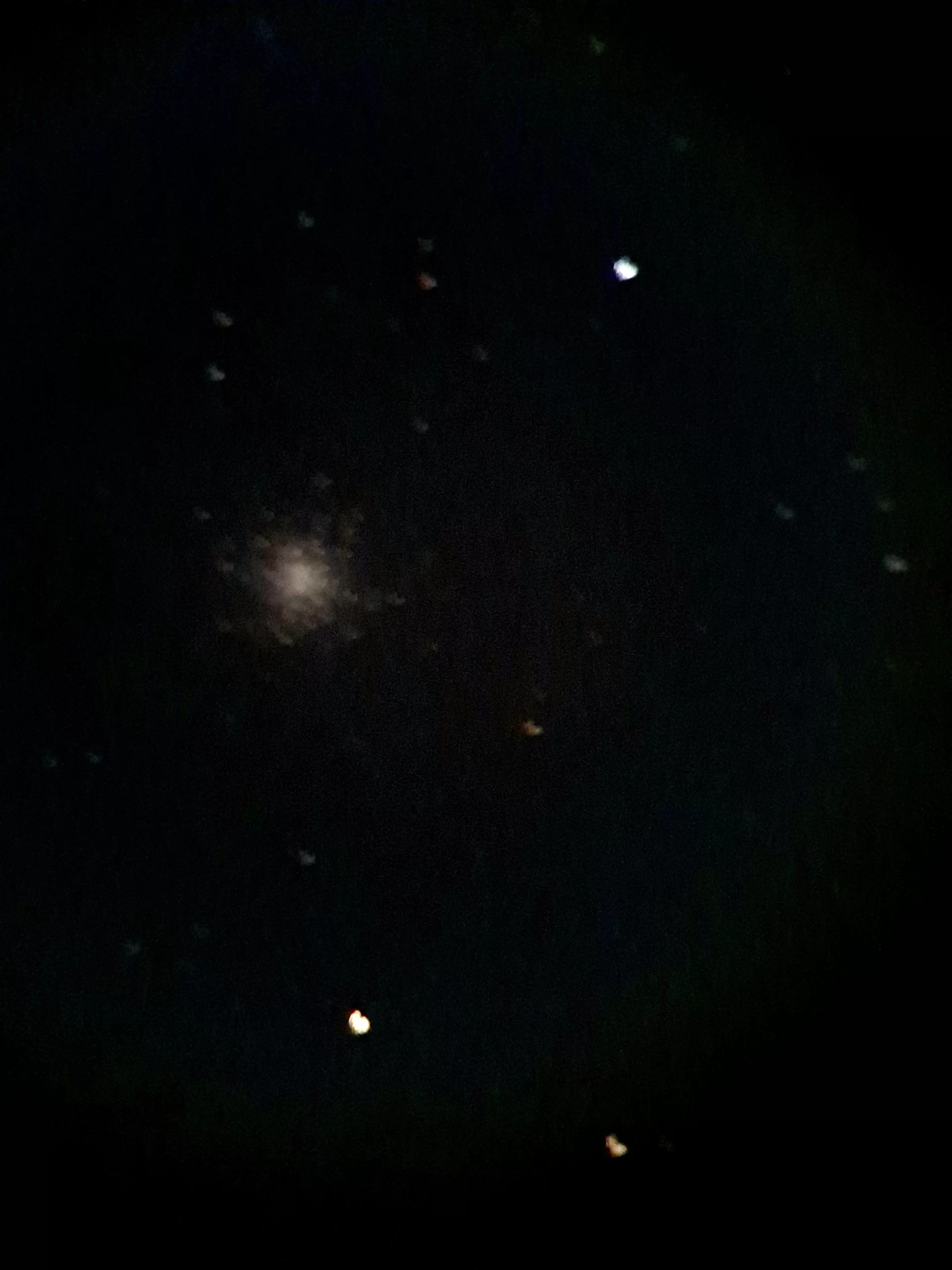Reflecting telescopes use mirrors to focus light to view and magnify objects. They use a system of two or more mirrors to gather and focus the light.
A primary mirror gathers and focuses light for viewing. It is located at the bottom of the optical tube and pointed towards the sky. In a reflecting telescope the size of the primary mirror is the aperture or light gathering power of the telescope.
Primary mirrors can be made of various materials and they can be shaped in several ways. They were originally made of polished metal, but are now commonly made of coated glass.
Telescope mirrors are generally one of two shapes:
Parabolic
or
Spherical
This refers to the shape of the reflective surface. As the names suggest they are both rounded surfaces. They are concave in order to focus the light to the smaller secondary mirror.
There are two main kinds of telescopes, reflectors and refractors. Reflector telescopes use mirrors to view objects while refractors use lenses.
Refractor telescopes do not contain mirrors, and they are generally smaller and lighter than reflectors.

What is the function of a telescope mirror?
Telescope mirrors do the work of collecting the light from the object that you are hoping to view and concentrating the light onto a smaller secondary mirror then to your eyepiece.
The mirror does not make the light brighter, it just concentrates the light to a smaller space so that it can be viewed more easily.
The size of the mirror determines how bright the images you view will be, also known as the aperture.
Aperture is one of the most important specs to consider when selecting a telescope. The aperture determines what you can see to a much greater degree than magnification.
The magnifying power of a telescope is largely determined by the eyepiece, not the mirrors.
What Kind of Mirrors Do Telescopes Use?
Reflector telescopes use a concave parabolic or spherical primary mirror and a smaller plane secondary mirror. These mirrors are made of optical glass coated with a reflective surface.
It may be surprising to learn that the reflective coating is on the top of the mirror rather than behind the glass as in household mirrors.
These professionally crafted mirrors are a large contributor to the high cost of telescopes.
This allows for more precise reflections because the light does not have to travel through glass before traveling to the eyepiece.
While most astronomers will not notice a difference between mirror shapes, some strong opinions do exist and there are some applications where the mirror shape is very important.
The mirrors are curved into a spherical or parabolic shape.
Parabolic
Parabolic mirrors are capable of reflecting light to a single point with precision.
Parabolic mirrors are more difficult to manufacture and therefore more expensive. They need to be made by hand.
As a general rule, larger telescopes with a focal ratio of f/8 or greater require parabolic mirrors or a corrector plate.
Spherical
Spherical mirrors are easier to manufacture in a lab or by a machine.
Smaller telescopes with spherical mirrors can be great, inexpensive telescopes.
Where is the primary mirror of a telescope?
The primary mirror is located just above the base of a reflector telescope. It is generally housed in a rocker box and held in place with spring loaded screws. This allows the mirror’s position to be adjusted within the telescope’s optical tube.
The primary mirror is pointed towards the sky and reflects the image of the section of the sky where it is pointed.
The rounded shape of the mirror concentrates the light onto the secondary mirror which directs the image to the focuser and eyepiece.
If you look into a reflector telescope from the open end you will see your reflection in the primary mirror.

Are Telescope Mirrors Concave or Convex?
Telescope mirrors are concave or curved inward. This shape allows it to make the reflection smaller and brighter. The primary mirror reflects light onto the plane secondary mirror which reflects the light to the eyepiece to be viewed by the observer.
Telescope mirrors are rounded into a parabolic or spherical shape. There are slight difference in the results you can achieve with each configuration.
Generally speaking it is thought that parabolic mirrors are of superior quality and create a more precise image.
Spherical mirrors are easier to produce and therefore less expensive to manufacture.
What are telescope mirrors made of?
Early reflector telescopes had mirrors made of polished metal, but today telescope mirrors are made of carefully shaped and polished optical grade glass coated with aluminum or silver. These coatings are placed on top of the glass rather than behind the glass as in household mirrors.
While virtually all telescope mirrors are made of glass there are several options for the mirror coatings.
Mirror coatings are generally made of aluminum or silver. These metals are mixed at different concentrations with bonding agents and sprayed over the glass. The mirror is sealed in a vacuum chamber to ensure that the coating is precisely level.
Protective coatings are often added on top of the reflective layer to increase the lifetime of the mirror.
Telescope mirrors can also be recoated with the reflective material if there is damage or wear on the reflective surface.
The care and cleaning of primary mirrors is a hotly debated topic in the astronomy community, read our opinion on mirror cleaning to see where we stand.
Zambudo mirrors, considered by many to be the highest quality optical mirrors available are parabolic reflector mirrors made of optical glass coated with aluminum.
Why do reflector telescopes have secondary mirrors?
Telescope mirrors work together to get the image from the sky to your eye. The primary mirror reflects and focuses the light to the secondary mirror that is smaller and flat. The mirror is located closer to the open end of the telescope.
The secondary mirror is held in place by spider vanes or thin supports that position the mirror parallel to the eyepiece.

The purpose of the secondary mirror is simply to reflect the image created by the primary mirror to the eyepiece.
The eyepiece does the work of magnifying the image to your eye.





